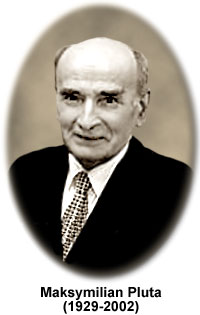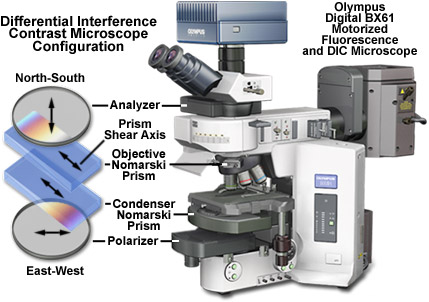Maksymilian Pluta
(1929-2002)

Maksymilian Pluta was a renowned professor and optics pioneer who authored one of the definitive twentieth century texts on light microscopy. Though he rose to great heights in the fields of optics and microscopy, he began his life under humble circumstances. Pluta was born on February 28, 1929 in Karwin, Poland to a large peasant family and completed his earliest education in difficult conditions during World War II. After the war had ended, financial hardship made it necessary for Pluta to move to Chorzˇw, where he lived with relatives.
When Pluta completed his secondary education in 1949, he decided to continue his studies at Jagiellonian University in Cracow. There he concentrated on physics and chemistry, subsequently attending Warsaw University, from which he obtained a Masters degree in Physics in 1954. While still a graduate student, Pluta began working at the Optics Department in the Institute of Precise Mechanics, which was later reorganized into the Central Optics Laboratory and then into the Institute of Applied Optics. He would remain involved with the department and Warsaw University in varying capacities throughout his entire professional career.
In 1964, Pluta was awarded a grant from the French government, which enabled him to receive additional scientific training at the Optical Institute in Paris under the direction of distinguished physicist and optics theoretician Georges Nomarski. There Pluta's work was primarily focused upon holography, which he hoped to be able to apply to microscopy, one of his primary areas of interest. Pluta was also intrigued by Nomarski's differential interference contrast (DIC) method of microscopy, a technique that he later substantially improved.
A tireless worker and avid researcher, Pluta received the title of assistant professor and professor before he had even been awarded the appropriate degrees. The discrepancy occurred because Pluta had been too busy with his scientific endeavors to submit the necessary paperwork. An admirably independent thinker, when Pluta was attempting to complete his formal education, he spent a significant amount of time developing his own theories, rather than focusing upon the work of others. For example, when he wrote his assistant professor dissertation he did not reference any other authors, but simply put forth his own idea and its development.

Pluta was extremely apt at finding solutions for problems in microscopy and made a wide variety of contributions to the scientific world. He penned three eminent optics texts, including Phase-Contrast and Interference Microscopy (1965), Optical Microscopy (1980), and the authoritative three-volume Advanced Light Microscopy (1988-1993), in addition to more than a hundred original scientific research reports and papers. He was the assignee of several patents and many of his inventions were applied by the Polish optics industry. Also an expert in microinterferometry, Pluta developed several new microinterferometric techniques, including a unique method of variable wavelength interferometry (VAWI).
A great leader, Pluta was highly involved with a number of scientific societies, editorial advisory boards, and organized a number of scientific conferences. He was a fellow of both the Royal Microscopical Society and the International Society for Optical Engineering (SPIE), as well as an honorary member of the State Microscopical Society of Illinois. He also founded the Polish chapter of the SPIE and was its President for many years. Among the many awards bestowed upon Pluta were the Silver Cross of Merit, the Cross of Poland's Independence, and the Gold Honor Badge of the Italian Society of Mineralogy and Petrology (SIMP). He was also awarded a prestigious prize from the Foundation of Polish Science in 1995 in the field of technical science for his opus Advanced Light Microscopy, which is still available from booksellers. Pluta's landmark treatise on basic and advanced techniques is considered by many microscopists to be the most comprehensive and definitive treatment of optical microscopy yet published.
